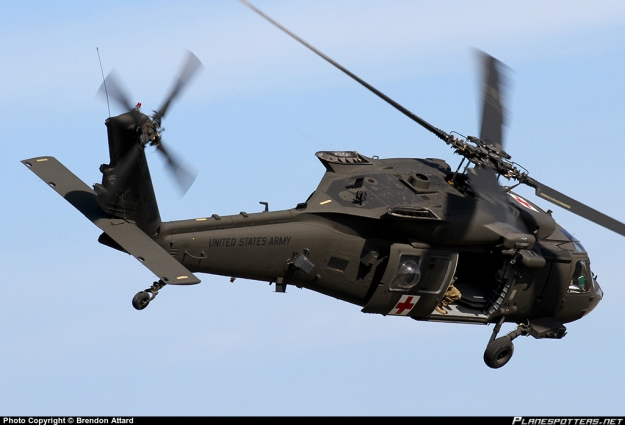Safety First: Vital Action In UH 60 Helicopter Upkeep
Wiki Article
Browsing Uh 60 Helicopter Rules and Conformity Needs

Regulatory Framework Summary
The regulatory structure controling UH-60 helicopter procedures includes a complicated set of requirements and rules established by aviation authorities. These laws are created to make sure the efficient and risk-free procedure of UH-60 helicopters in different atmospheres. The Federal Air Travel Management (FAA) plays a central role in developing and implementing these guidelines, which cover a wide variety of functional elements, including airworthiness criteria, pilot certifications, upkeep demands, and operational treatments.Compliance with these regulations is essential for helicopter drivers to preserve the highest degree of safety and functional integrity. Failing to follow these laws can lead to serious effects, including crashes, injuries, and regulative sanctions. As a result, helicopter operators have to stay educated about the latest regulative developments and make sure that their operations are in complete compliance with all relevant guidelines and criteria.
Airworthiness Regulations and Evaluations
Amidst the regulative structure governing UH-60 helicopter procedures, a critical focus rests on conformity with Airworthiness Directives and conducting complete inspections to support security criteria and functional integrity. Airworthiness Directives (ADs) are provided by aeronautics authorities to address dangerous problems in airplane, including the UH-60 helicopter, and mandate details actions to be taken by proprietors or drivers. Conformity with Advertisements is mandatory, and failure to follow these directives can result in serious consequences, including grounding of the airplane.
Regular examinations are vital to guaranteeing the airworthiness of UH-60 helicopters. By sticking to a stringent inspection program, operators can find and deal with possible issues without delay, consequently boosting the security and reliability of UH-60 helicopter operations.
Pilot Qualifications and Training

Pilot training for UH-60 helicopters is thorough and covers a vast array of subjects, including airplane systems, emergency treatments, navigation, and mission-specific training. In addition, pilots go through simulator training to exercise different emergency situation situations in a regulated atmosphere. This training aids pilots establish the essential skills to take care of challenging situations properly.


In addition, recurring training and specialist advancement are necessary for UH-60 pilots to stay present with the newest policies, technology, and best techniques. By spending in pilot certifications and training, operators can enhance safety and security, enhance performance, and ensure conformity with governing demands in the operation of UH-60 helicopters.
Functional Limitations and Needs
Pilot credentials and training function as the foundation for recognizing the functional restrictions and requirements associated with UH-60 helicopter procedures (uh 60). These operational constraints are placed in location to ensure the safety and security of the team, find more info passengers, and the airplane itself. Operational limitations might include factors such as climate conditions, weight restrictions, elevation constraints, and functional limits. It is essential for pilots to be well-versed in these constraints to make enlightened decisions during trip operations. Additionally, conformity demands, such as adhering to details trip paths, interaction methods, and emergency procedures, are essential for keeping operational safety and regulative compliance. Pilots must remain present with all operational restrictions and requirements through routine training, rundowns, and assesses to reduce threats and make sure risk-free and efficient UH-60 helicopter procedures. By focusing on adherence to these functional standards, pilots can improve the general safety and performance of their goals while maintaining governing criteria.Emergency Situation Treatments and Conformity Screening
Effective emergency situation procedures and thorough conformity testing are essential elements of maintaining operational safety and regulative adherence in UH-60 helicopter operations. Normal compliance screening guarantees that the helicopter fulfills all regulative requirements established forth by air travel authorities.Conformity testing additionally reaches tools onboard the UH-60, such as communication systems, navigation instruments, and safety gear. Ensuring that all tools is functioning appropriately and satisfies governing requirements is crucial for risk-free procedures. In addition, compliance screening may entail simulations of emergency scenarios to examine the crew's feedback and the helicopter's performance under stress and anxiety. By focusing on emergency treatments and compliance screening, UH-60 operators can alleviate threats and demonstrate their dedication to safety and governing conformity.
Conclusion
To conclude, adherence to governing structure, compliance with airworthiness regulations, pilot credentials and training, operational restrictions, and emergency situation treatments are vital for browsing the regulations and requirements of operating a UH-60 helicopter. uh 60. It is important for drivers to focus on safety and security and ensure full compliance with all suitable regulations to maintain the airworthiness and functional integrity of the aircraftNavigating the regulatory landscape surrounding UH-60 helicopter operations requires a nuanced understanding of the moved here complex web of guidelines and compliance requirements.Compliance with these regulations is necessary for helicopter operators to maintain the highest levels of safety and security and functional stability.Amidst the regulatory structure regulating UH-60 helicopter operations, a vital focus exists on compliance with Airworthiness Directives and conducting comprehensive inspections check over here to promote security standards and functional dependability.Effective emergency situation procedures and comprehensive conformity testing are crucial parts of preserving operational safety and security and regulative adherence in UH-60 helicopter operations. Normal compliance screening guarantees that the helicopter fulfills all governing requirements established forth by air travel authorities.
Report this wiki page